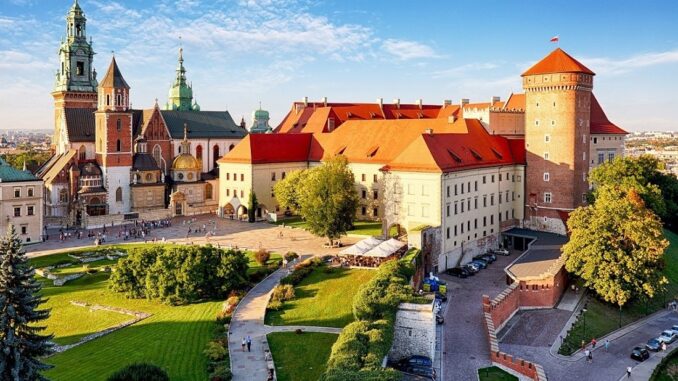
With big blobs of jam oozing onto my chin – it was time to reflect on a very crazy Fat Thursday in Kraków.
As we waited on the corner of Starowiślna, a main street in the Jewish quarter, a 6ft stranger wearing a luminous shell suit and carrying a bag full of contraband, suddenly loomed up and began trying to force us to buy his knock off goods.
After five minutes of haggling, he relented, introduced himself as Tomasz and invited me and fellow travellers Kenny, Ruaridh and Flossie to accompany him in his vintage police Trabant for a drive around his old neighbourhood. But not before the boot had been opened and we were presented with shots of vodka and forkfuls of pickles.
Welcome to the world of Crazy Guides – a quirky tour run by Mike Ostrowski, focussing on the centrally planned Socialist district of Nowa Huta, where he was happily brought up in the late 1970s.
Designed as a second city to Kraków for heavy engineering and promoted as a “worker’s paradise”, the purpose-built area had distinctive architecture, man-made parks and green areas and subsidised food outlets, all linked to the main hub by tramway.
Despite its lack of colour, the district has increased in popularity over the last few years with young people starting up the property ladder moving into the area which has retained a close-knit community. And behind the laughter of the tour, it’s important to recognise the historical importance of Nowa Huta.
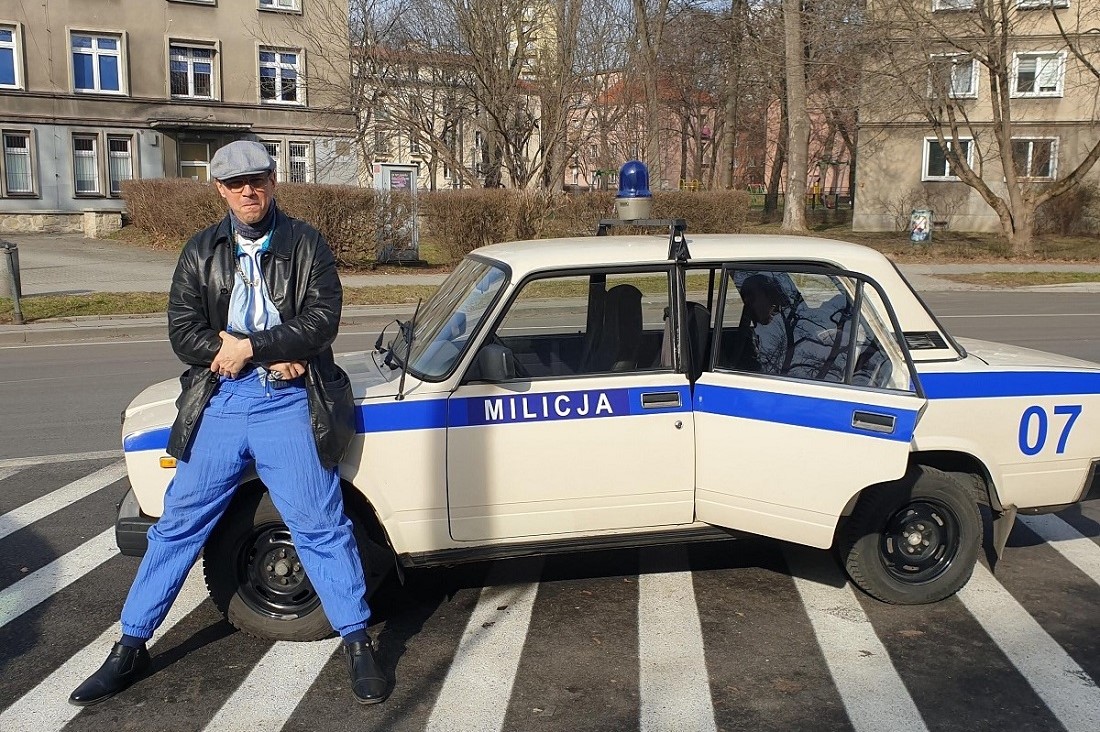
We were certainly not incognito, with the Trabant and particularly the knitted hat covering its blue warning light, attracting lots of curious stares, as we zoomed along Starowiślna. We in turn, had our attention caught by a large queue outside a small bakery.
Thinking rationing had returned, we stopped to investigate and discovered it was Fat Thursday, famous in Poland to allow people to indulge in their favourite foods before Lent. Doughnuts, known as Paczki, are a particular favourite sweet treat and packed full of jam and goo.
The sugar kept the adrenaline going on the fast-moving tour featuring the area’s central square, blocks of residential homes, the former steelworks, which were once one of communist Poland’s most important industrial plants, employing around 40,000 people and the Lord’s Ark church, built in the shape of a boat by volunteers. An old Soviet tank also sits on the streets as a reminder of past times.
Once we were transported back into “real time”, we hopped onto the impressive tram system and made our way to the city’s jewel in the crown, the Rynek Glówny, or the main square.
It’s the biggest medieval plaza in Europe at 40,0000 square metres and an impressive sight to see. Before tourists came, many locals had their home here, but these days, many of the buildings have been converted into hotels, restaurants, pubs, clubs and souvenir shops.
Designed in 1257, at the hub of it is Sukiennice Cloth Hall, a reminder of the city’s historic links to trade and commerce in Eastern Europe. Today, it is a mix of cloth and handicraft stalls, all under the architecturally beautiful building.
In a nod to the famous leaning tower of Pisa, the Town Hall Tower, which is the only part of the 13th century building left, will have you bending sideways to enjoy the view from the top.
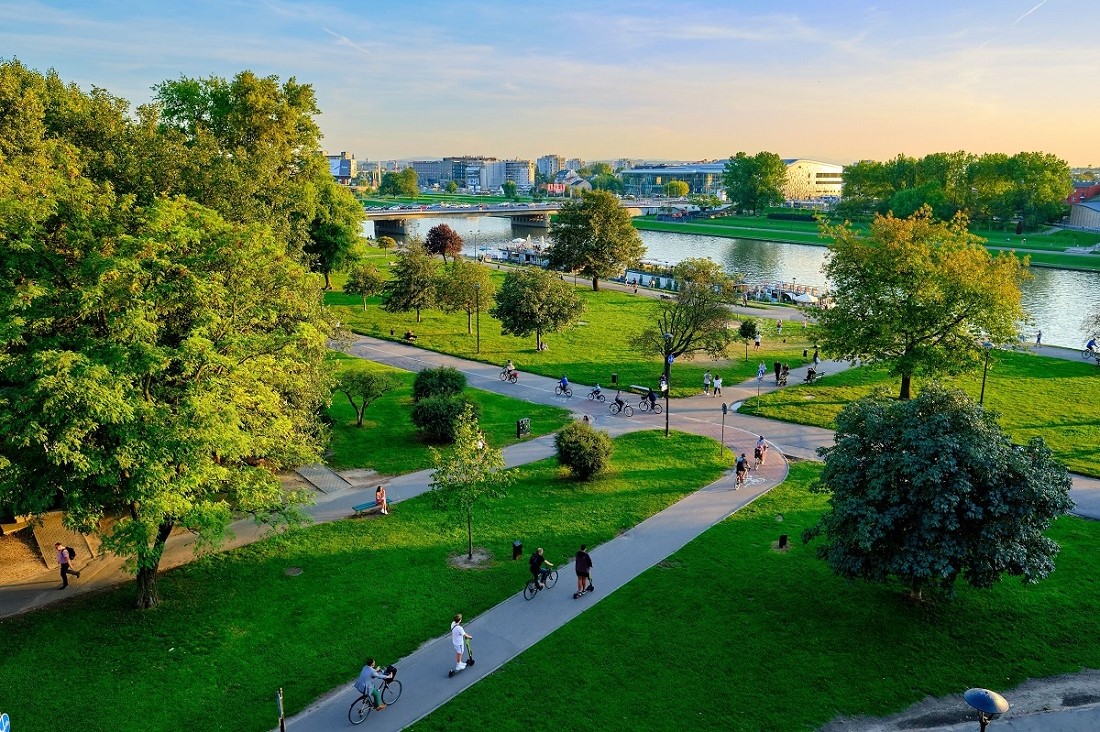
The looming gothic spires of St Mary’s Basilica hang over the square and dwarf the small and quaint Church of St Adalbert in the east. A beautiful bronze statue of poet Adam Mickiewicz also stands proud.
A short walk takes you to the equally beautiful and stylish Wawel Castle, that’s if you can dodge the flames from the dragon statue. perched at the foot of the hill.
Part of the UNSECO World Heritage site, which encompasses the centre of the city, the castle is imposing and beautifully preserved.
With wonderful art and intricate tapestries, the castle played a very important role in Kraków as the main seat of the national government in the 1400s.
Part of a complex of architectural beauties, next door is the cathedral, the original built in the year 1018, today is the third attempt, a gothic lovely constructed in the 14th century with elements of Romanesque, Baroque and Neoclassical. There are also side chapels and a golden domed Sigismund’s Chapel. In 1978, Karol Wojtyla, archbishop of Kraków, was elevated to the papacy as Pope John Paul II and his work lives on today.
History plays an important part in Kraków and particularly in World War II, when the city was saved from bombing after being chosen by the Germans, as the capital of the General Government in 1939.
A Jewish ghetto was created in the Podgórze area, forcing around 20,000 people to live in cramped conditions with barely any possessions, the Germans taking the rich pickings for themselves and forcing the fit into hard labour in controlled factories. Those who were of no use, were cruelly sent to die in the Auschwitz concentration camp.
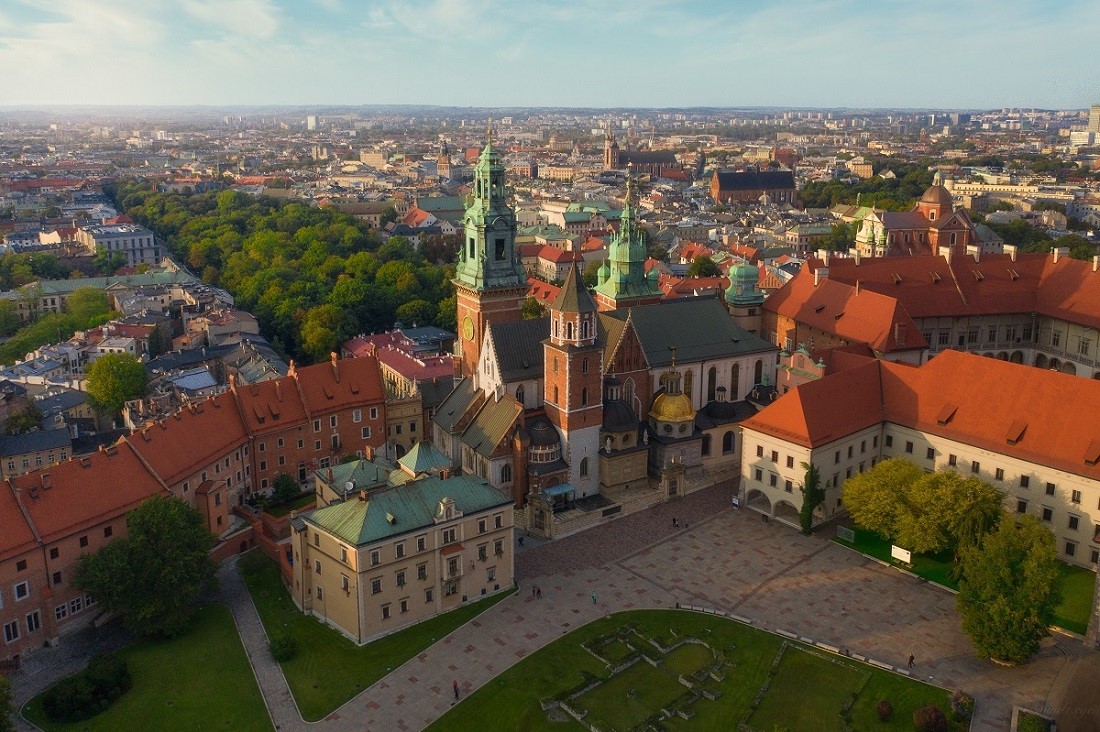
An enamelware factory run by Oskar Schindler and made famous by the 1993 Steven Spielberg film Schindler’s List, became a haven for the Jews and today the building houses the Museum of Contemporary Art and the Historical Museum of the City of Krakow.
Fascinating to visit, the museum gives the visitor an insight into how the Jews lived and how Schindler risked his life to help liberate 1,200.
Originally motivated by money, Schindler, a humanitarian, used tenacity and showed great strength to save the lives of his employees.
The area today retains many of the original buildings and simply strolling around, you can imagine the live the persecuted Jews lived.
Happily, Krakow is now a thriving city and a walk across the Father Bernatek footbridge, locally known as “the lover’s bridge” and which connects the historical districts, shows how cosmopolitan it is.
Adorned with acrobatic and gravity defying sculptures, the bridge is a sign of hope and the ideal place to work off those Fat Thursday calories!
For more information on Krakow, please visit: www.poland.travel and www.visitkrakow.com.
Author Bio:
Rebecca Hay is an experienced travel writer and member of The British Guild of Travel Writers. Follow her adventures with her family on Twitter and Instagram @emojiadventurer and on Facebook via EmojiAdventurers2.
Photographs courtesy of Visit Kraków


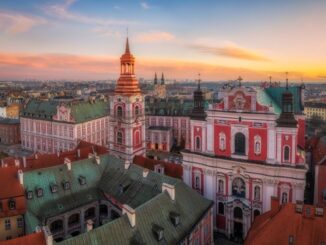
Be the first to comment